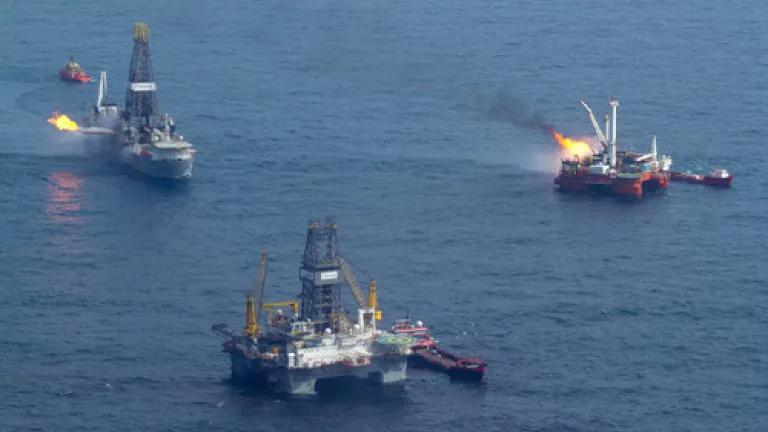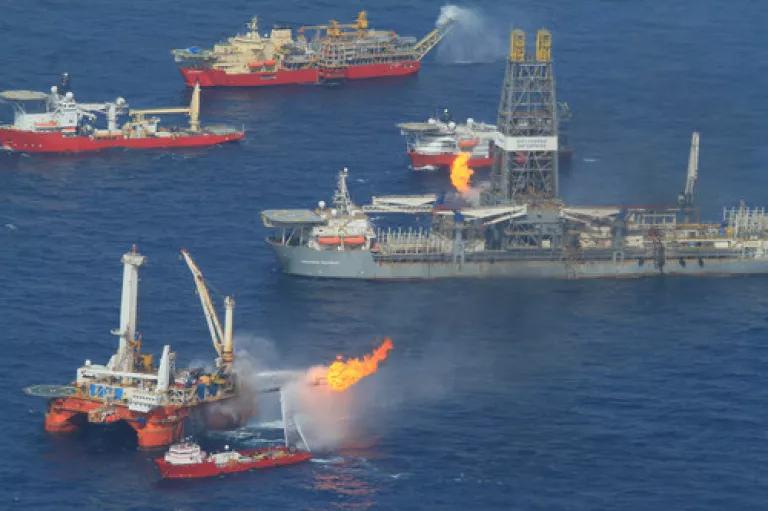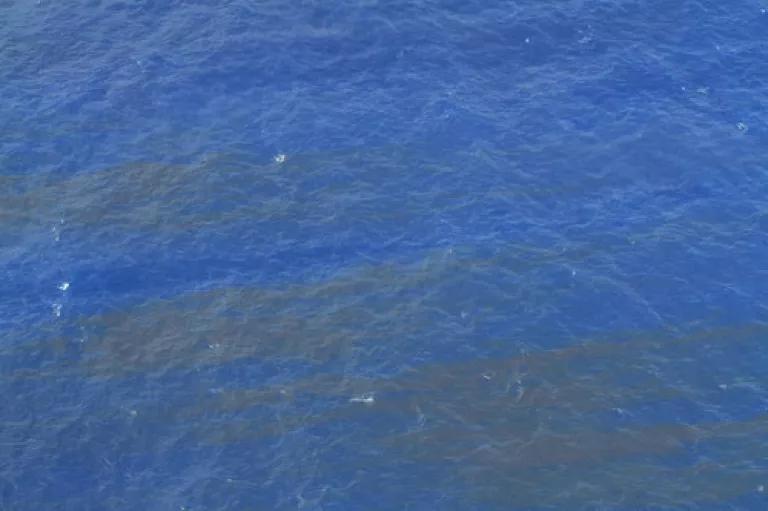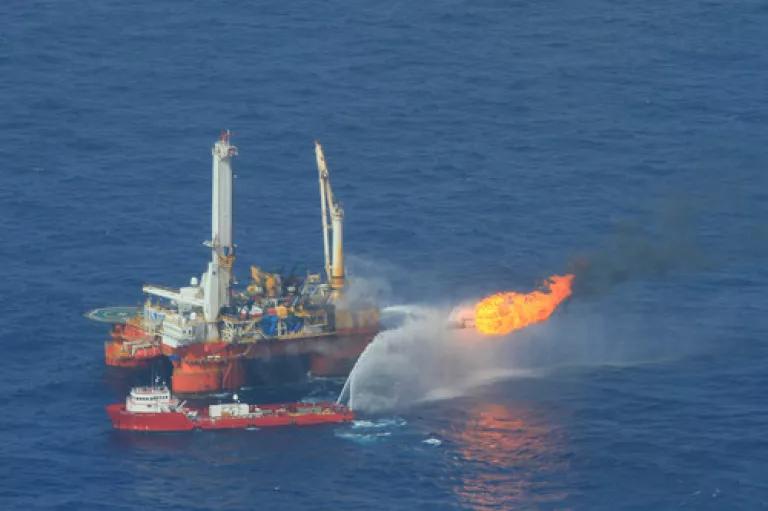
I flew over the Deepwater Horizon spill site on Wednesday, and the first thing that struck me was how far out to sea it is.
After our plane took off from Belle Chasse, Louisiana, it took us almost 30 minutes traveling over the Delta to finally reach the coast. Then we flew over open water for another 20 minutes before we got to the site.
The remote location of the well adds yet another challenge to the cleanup efforts. The Exxon Valdez spill occurred close to shore near fully equipped ports, and still it proved enormously difficult to capture the oil.
Here in the Gulf, the Deepwater Horizon is nearly 50 miles off the coast. It was astonishing to see how far cleanup crews, engineers, and relief well drillers travel to get to the site. It was also alarming to realize that the oil washing up on coastal beaches has already covered great distances—and will keep migrating farther and farther afield.
Once our seaplane arrived at the site, we saw two platforms that we were told were where workers are drilling the relief wells, two ships with enormous flares that we guessed were capturing some of the oil from the broken well, and about another 20 boats clustered around.



Seeing how massive, complex, and potentially dangerous the spill operations are reinforced the need for well trained, fully empowered government oversight. Yet over the past few decades, the political trend has been to cripple our regulators by underfunding them and stripping them of the tools they need to protect the American public.
The BP spill is a vivid example of why this must change.
